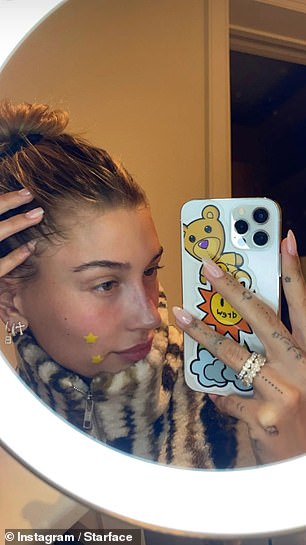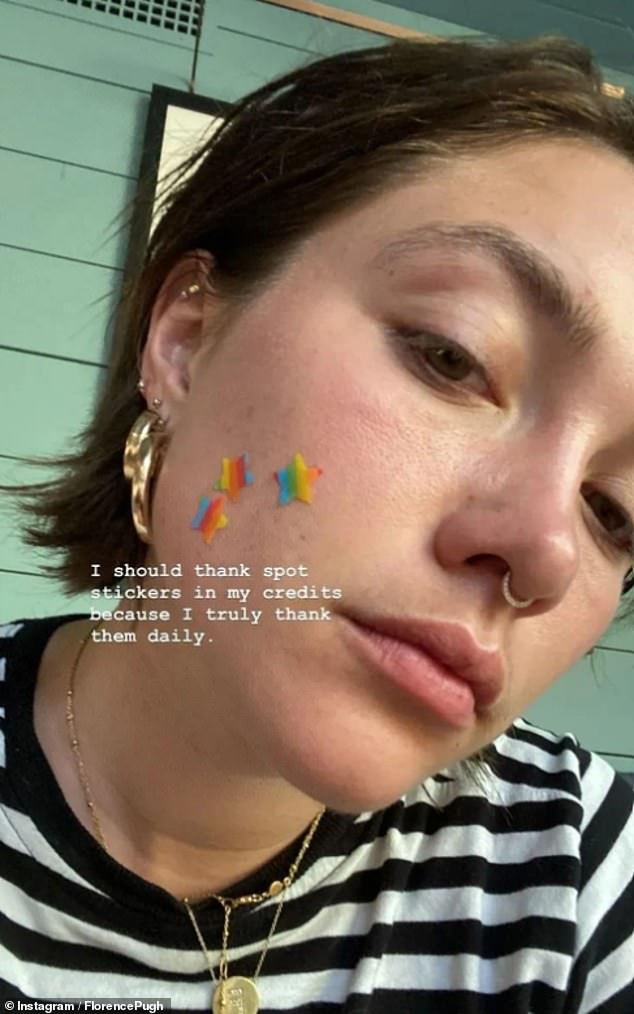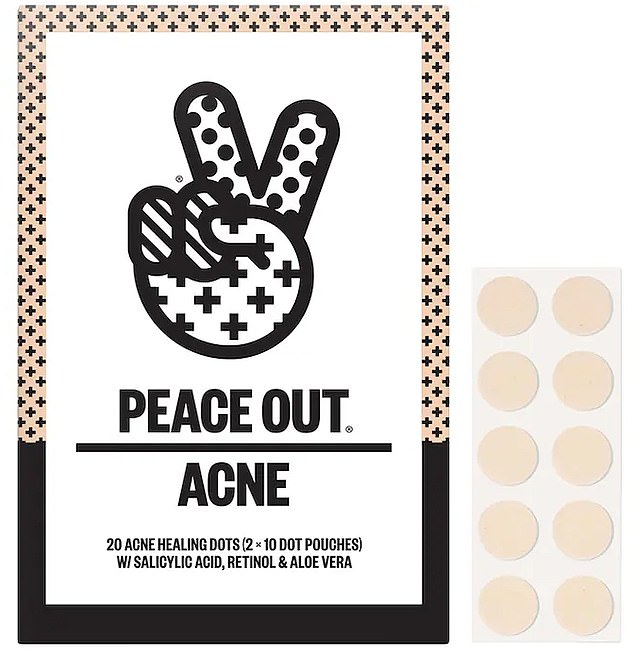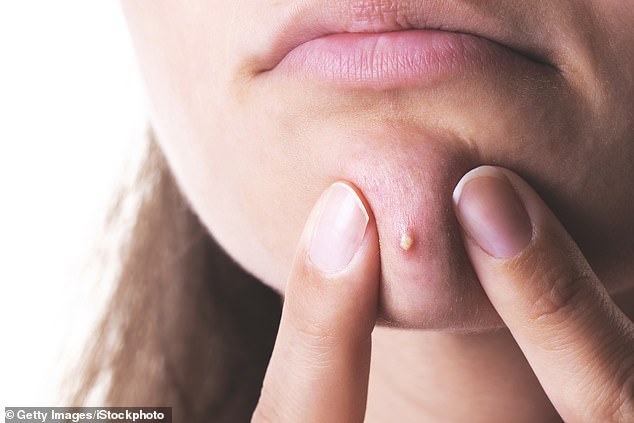Dermatologists reveal whether celebrity-loved pimple patches are actually BAD for your skin
Forget the sticky pimple cream you always slather on when you have a spot – there’s something new on the market that’s been a hit with celebrities like Hailey Bieber, Addison Rae and Florence Pugh.
Pimple patches are an indispensable accessory these days. They appear on everyone’s face in all sorts of cheerful colours and even in cute shapes such as hearts, flowers and stars, which look like stickers.
Embarrassing pimple creams and pastes have been forgotten, and in their place are these popular patches lining the shelves of beauty giants Sephora and Ulta.
Kim Kardashian and her 11-year-old daughter, North West, even raved about the product, applying some to their faces in a recent video they posted to their joint site. TikTok account.
But before you spend money on them, what exactly do these pimple patches do? And are they actually good for your skin?
To find out more about this trendy, must-have skincare product, FEMAIL consulted two top dermatologists to find out what’s actually underneath that star-shaped layer.

The pimple patch has become a must-have accessory for celebrities like Justin Bieber and his wife Hailey. But are they good for your skin?

Don’t Worry Darling actress Florence Pugh also appears to be a fan of the colorful patches, which were created by the brand Starface

Embarrassing pimple creams and pastes have been forgotten and in their place are these popular patches on the shelves of both beauty giants Sephora and Ulta
What are pimple spots and what do they do?
According to a Rhode Island dermatologist Doctor Tiffany LibbyMost pimples are made up of something called hydrocolloid.
She explained to DailyMail.com that hydrocolloid is simply ‘a moisture-retaining material that creates a moist environment to promote healing.’
And oddly enough, it’s not new either, although its marketing may be.
“These types of dressings, hydrocolloid dressings, have been used in medical settings for wound care for many years,” Dr. Libby said.
The dermatologist said the patches, which are designed to remove spots on the skin, offer two “key” benefits: absorption and protection.
“These patches absorb excess fluid, such as pus and oil, from the pimple, which flattens it and reduces inflammation,” says Dr. Libby.
In addition, they protect the pimple from external bacteria, dirt, and touching and picking.


FEMAIL consulted top dermatologists Dr. Tiffany Libby (left) and Dr. Lindsey Zubritsky (right) to find out whether pimple patches are good for the skin

Dr Libby said the patches, which are designed to remove spots on the skin, offer two ‘key’ benefits: absorption and protection
Are pimple patches good for your skin and when should you use them?
The good news is that pimple patches are good for the skin as long as they are applied to clean skin, says Dr. Libby.
Dermatologist from Mississippi Doctor Lindsay Zubritsky, who goes by @dermguru on social media, agrees.
‘Depending on how the pimple patches are made and what ingredients are in them, they can be very effective in reducing the size and healing time of a pimple,’ Dr. Zubritsky explains to DailyMail.com.
And it doesn’t matter what time of day you put them on, but it’s generally recommended to leave them in for at least 12 to 24 hours, Dr. Zubritsky says.
They can be effective at any time of the day, be it morning, evening or even afternoon.
“In the morning you can apply the patch and then put makeup on over it. In the evening it provides a barrier and protection from accidental picking in the evening,” Dr. Libby advises.

It doesn’t matter what time of day you put them on, but it’s generally recommended to leave them in for at least 12 to 24 hours, says Dr. Zubritsky (stock image)
What types of pimples are these patches best suited for?
While pimple patches are fine to use for everyday blemishes, you should be careful about sticking them on cystic pimples that may develop on your skin.
Cystic pimples are a type of inflammatory acne that forms deep spots in the skin, per Cleveland Clinicand can be very painful.
These spots can form when bacteria, oil, and dead skin cells become trapped deep within the hair follicles.
Unfortunately, a cloud-shaped or neon-colored pimple patch isn’t always the solution for cystic pimples.
“I’m not a big fan of using pimple patches for cystic acne,” Dr. Zubritsky admitted.
“Cystic acne is deep under the skin, so a superficial patch isn’t really going to address these types of pimples or make a big difference,” she said.
However, the dermatologist indicated that hydrocolloid can help if there is a lot of fluid in the cyst.
Keeping your hands off the area is also an effective way to remove it, Dr. Libby added, as picking at cystic acne can cause scarring.
But if you are suffering from blackheads or pimples on your face, which can be caused by clogged pores and hair follicles, then pimple patches can be the solution.
Both dermatologists recommended using a medicated pimple patch for these bumps that contains acne-fighting ingredients, such as salicylic acid.
Salicylic acid can help keep your pores clean and clear and exfoliates the skin, per Healthline.
When You Should Ditch the Pimple Patches and See a Doctor Instead
While these acne stickers may help with some blemishes, it’s important to know when to toss them in the trash and see a doctor.
‘If patches and over-the-counter creams don’t help clear up your acne or prevent breakouts, see a licensed dermatologist as more aggressive treatment such as prescription creams and/or oral medications may be needed,’ Dr Libby told DailyMail.com.
Don’t wait too long to treat your acne, because stubborn acne can cause scarring and is much more difficult, expensive and labor-intensive to treat in the long run.’
